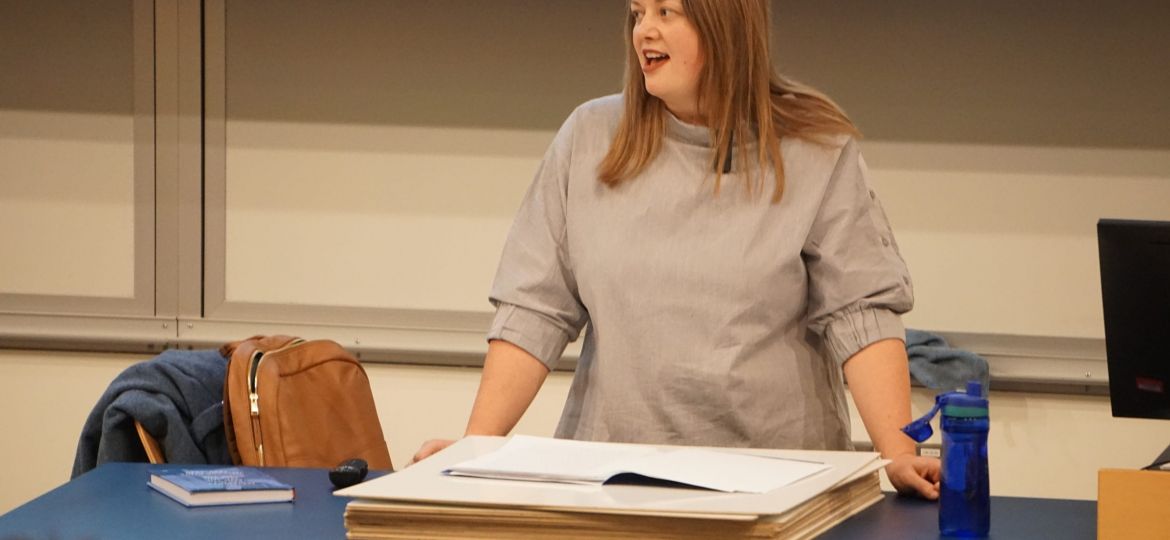
Luther College Professor Anna Peterson came to St. Olaf on Friday, Nov. 9 to lecture on Norwegian maternity legislation and its effects on women from 1880 to 1940.
“I hope to highlight the ways in which women’s diverse needs and interests intersected with policy goals and outcomes,” Peterson said.
Peterson’s talk, titled, “Women and the Norwegian Welfare State,” gave particular attention to the Child Welfare Act under the Castberg Laws and revisions made to Norwegian health insurance law in 1915.
The Castberg Laws “represented a monumental expansion of maternity benefits and services available to Norwegian women,” writes Peterson in her book “Maternity Policy and the Making of the Norwegian Welfare State, 1880-1940.”
The Castberg Laws helped fewer women than intended by setting standards not all women could meet to receive insurance. Fewer than 60 women per year received support, compared to the 1,400 women projected to receive support under the Child Welfare Act.
Peterson explained how many Norwegians were denied insurance benefits in the 1920s due to a failure to meet the 10-month insurance membership requirement.
“[This] did not stop working-class women and men applying for, and in some cases demanding, maternity insurance coverage,” Peterson said.
Peterson then discussed midwives during the early twentieth century and their struggle under the Castberg Laws to follow protocol while also remaining loyal as mothers’ confidants.
In addition to discussing prominent legislation, Peterson’s lecture covered individuals and initiatives that were significant in helping working class mothers.
Peterson discussed Norwegian feminist Katti Anker Møller, who fought to decriminalize abortion and protect the rights of children born out of wedlock.
“Her ideas were rooted in class expectations of women,” Peterson said.
Peterson went on to discuss the Maternity Exhibition, a project that successfully highlighted the horrific conditions in which Norwegian working class mothers gave birth. The Exhibition aimed to “raise funds for a municipal maternity home” Peterson said.
The success of the Maternity Exhibition led to a major decrease in the number of at-home births and an increase in the number of institutionalized births.
“I know that [Peterson], overall, kind of talked about how it was bad for women or demeaning on women but it also showed how strong women actually are,” Kassidy Korbitz ’22 said. “The underlying message was just ‘yeah, it sucked for them, but they fought it,’ and it sucked for the midwives, but they fought it … nobody ever just complied, which is cool.”











